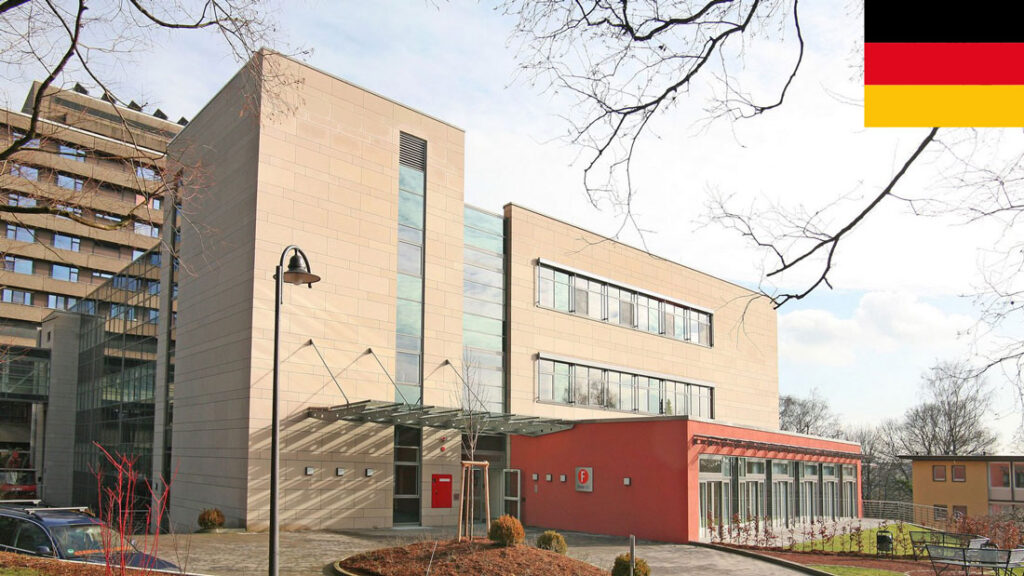Access to Glaucoma Care in Rural Philippines
Introduction to Glaucoma and its Prevalence in the Philippines
Welcome to our blog post on the crucial topic of glaucoma care in rural Philippines! Today, we explore the challenges faced by individuals living in remote areas when it comes to accessing proper treatment for this often misunderstood eye condition. Glaucoma is a silent thief of sight, affecting millions worldwide, and unfortunately, it is no stranger to the beautiful archipelago of the Philippines. So join us as we delve into the world of glaucoma and uncover how access to care can make all the difference in preserving vision and transforming lives. Let\’s get started!
Challenges in Accessing Glaucoma Care in Rural Areas
Challenges in Accessing Glaucoma Care in Rural Areas
In rural areas of the Philippines, accessing glaucoma care can be a daunting task. The lack of healthcare facilities and specialized eye clinics makes it difficult for individuals with glaucoma to receive proper diagnosis and treatment. Limited transportation options further exacerbate this issue, as patients may have to travel long distances to reach the nearest city where these services are available.
Moreover, there is often a shortage of trained ophthalmologists who specialize in treating glaucoma. This means that even if patients manage to make the journey to a larger town or city, they may still face long waiting times before receiving the care they need. Additionally, the cost of consultations and medications can be prohibitive for many individuals living in rural areas who already struggle with limited financial resources.
The lack of awareness about glaucoma among both patients and healthcare providers also poses a significant challenge. Many people in rural communities may not recognize early symptoms or understand the importance of regular eye examinations. As a result, cases go undiagnosed until irreversible vision loss occurs.
Furthermore, inadequate infrastructure and technology hinder efficient diagnosis and monitoring of glaucoma progression. Remote areas often lack access to advanced diagnostic tools such as optical coherence tomography (OCT) machines or visual field testing equipment necessary for accurate assessment.
To address these challenges, collaborations between government agencies, non-profit organizations, and local communities are crucial. Initiatives should focus on increasing access to affordable eye care services by establishing mobile clinics that visit remote regions regularly. These clinics could provide comprehensive screenings as well as follow-up appointments closer to home.
Additionally, training programs should be developed to equip healthcare workers in rural areas with skills needed for early detection and management of glaucoma cases. Educating local community members about preventive measures through health campaigns can also help raise awareness about this silent but potentially devastating condition.
By addressing these challenges head-on through strategic planning and collaborative efforts, rural communities in the Philippines can overcome barriers to glaucoma
Efforts to Improve Access to Glaucoma Care
Efforts to Improve Access to Glaucoma Care
In order to address the challenges faced in accessing glaucoma care in rural areas of the Philippines, various initiatives have been implemented. One such effort is the establishment of mobile clinics that bring eye care services directly to remote communities. These clinics are equipped with advanced diagnostic tools and staffed by trained healthcare professionals who can conduct comprehensive eye examinations.
Furthermore, partnerships between local health authorities and non-governmental organizations (NGOs) have proven instrumental in expanding access to glaucoma care. Through these collaborations, awareness campaigns are conducted to educate individuals about the importance of regular eye check-ups and early detection of glaucoma. Additionally, free or subsidized treatment options are made available for those who cannot afford it.
Telemedicine has also emerged as a promising solution for improving access to glaucoma care in rural areas. By utilizing technology such as video consultations and remote monitoring devices, patients can receive expert advice from ophthalmologists without needing to travel long distances.
Additionally, training programs are being implemented to enhance the skills of primary healthcare providers in diagnosing and managing glaucoma cases. This empowers them with knowledge and resources needed to deliver appropriate care at the community level.
These efforts collectively aim towards reducing barriers and ensuring that individuals living in rural areas have equitable access to quality glaucoma care. By bringing essential services closer to their doorstep and empowering local healthcare providers, we can make significant strides in combating this silent but devastating disease
Impact on the Local Community
Impact on the Local Community:
The impact of limited access to glaucoma care in rural areas extends far beyond just individual patients. The lack of proper diagnosis and treatment options has a ripple effect that affects families, communities, and the overall well-being of the population.
When individuals suffer from untreated or undiagnosed glaucoma, their daily lives are significantly affected. Vision loss can limit their ability to work, perform daily tasks, and engage in social activities. This not only impacts their own quality of life but also creates a burden for their caregivers who must step in to assist them.
Furthermore, when members of a community struggle with vision problems due to glaucoma, it hinders economic development. Without adequate eye care services available locally, individuals may be unable to pursue certain job opportunities or contribute fully to the local economy.
Additionally, education is impacted as children with undiagnosed or untreated glaucoma may struggle academically due to poor vision. This can lead to lower educational attainment levels within these communities.
Moreover, without early detection and intervention for glaucoma cases in rural areas, there is an increased risk of irreversible blindness among residents. This not only places a burden on healthcare systems but also strains resources that could otherwise be allocated towards preventive measures and other critical health needs.
The impact on the local community cannot be underestimated when it comes to limited access to glaucoma care in rural Philippines. It is essential that efforts continue towards improving accessibility so that all individuals have equal opportunity for diagnosis and treatment – ultimately leading to healthier communities as a whole.
Personal Stories from Patients and Healthcare Providers
Personal Stories from Patients and Healthcare Providers
When it comes to glaucoma, personal stories from patients and healthcare providers can provide a powerful insight into the challenges and triumphs of accessing care in rural Philippines.
One patient, Maria, shared her experience of living with glaucoma in a remote village. She described the difficulties she faced in reaching a healthcare facility that could diagnose and treat her condition. The lack of transportation options made each trip an arduous journey. Despite these obstacles, Maria remained determined to seek the care she needed.
On the other side of the story are dedicated healthcare providers who work tirelessly to bring accessible glaucoma services to rural communities. Dr. Santos, an ophthalmologist based in a small clinic outside Manila, shared his passion for providing quality care to those who need it most. He recounted how he often traveled long distances to reach isolated areas where patients had limited access to medical resources.
These personal narratives highlight not only the barriers faced by patients but also the dedication of healthcare professionals working against all odds. Their stories serve as a reminder that while there may be challenges in accessing glaucoma care in rural Philippines, there are also individuals committed to making a difference.
Through their collective efforts, awareness about glaucoma is spreading within these communities. Patients now have better understanding about early detection and treatment options available locally or through outreach programs organized by hospitals and organizations specializing in eye health.
The impact on these local communities cannot be overstated – improved access means lives being changed for the better. By receiving timely diagnosis and appropriate treatment for their condition, individuals can maintain their vision for longer periods of time thereby enabling them to continue contributing actively within their families and society at large.
As we look ahead towards improving access even further, collaboration between government agencies, non-profit organizations,and private sector entities will play crucial roles.
Through continued advocacy efforts,mobile clinicsand telemedicine initiatives can help bridge gaps inservice delivery, ultimately reaching more individuals in remote areas.
The personal stories of patients and healthcare
Future Considerations for Improving Access to Glaucoma Care
Future Considerations for Improving Access to Glaucoma Care
1. Telemedicine Solutions: With the advancement of technology, telemedicine can play a crucial role in bridging the gap between rural areas and specialized glaucoma care. By utilizing video consultations, remote monitoring devices, and digital health platforms, healthcare providers can diagnose and manage glaucoma cases remotely.
2. Mobile Eye Clinics: Bringing mobile eye clinics to rural communities can ensure that individuals have access to regular eye check-ups and early detection of glaucoma. These clinics equipped with necessary diagnostic tools and trained professionals can provide screening services, educate patients about the disease, and refer them to appropriate treatment centers if needed.
3. Training Programs for Healthcare Providers: It is essential to invest in training programs for healthcare providers in rural areas to enhance their knowledge and skills in diagnosing and managing glaucoma effectively. This will enable them to provide comprehensive care locally without having patients travel long distances for treatment.
4. Awareness Campaigns: Increasing awareness about glaucoma among the general public is vital for early detection and timely intervention. Educational campaigns targeting rural communities should be conducted through various mediums such as community meetings, radio programs, posters at local healthcare facilities, etc., emphasizing the importance of regular eye examinations.
5. Collaboration with NGOs and Government Agencies: Partnerships between non-governmental organizations (NGOs), government agencies, medical institutions, and private sectors can help mobilize resources efficiently towards improving access to glaucoma care in rural areas. These collaborations can support initiatives like free or subsidized screenings camps or establishment of dedicated eye care centers.
6.
Impactful Policy Changes: Policymakers need to prioritize eye health by implementing policies that address barriers faced by those living in remote regions when accessing glaucoma care.
These policy changes may include increasing funding allocation for eyecare infrastructure development,laws requiring mandatory inclusion of eyecare services under universal health coverage schemes,and promoting research to develop cost-effective treatment options.
Addressing the challenges of
Conclusion
Conclusion
Improving access to glaucoma care in rural areas of the Philippines is an ongoing challenge, but efforts are being made to address this issue. The prevalence of glaucoma in the country highlights the urgent need for accessible and affordable treatment options for those living in remote communities.
Various initiatives have been implemented to bridge the gap between urban and rural areas when it comes to glaucoma care. Mobile clinics, telemedicine services, and community outreach programs have all played a role in bringing vital eye care services closer to those who need them most. These efforts have not only provided much-needed treatment but also raised awareness about glaucoma within local communities.
The impact on the local community has been significant. By providing accessible glaucoma care, individuals can receive timely diagnosis and treatment, which helps prevent vision loss or further complications. Patients who previously had limited access to healthcare now feel supported and empowered as they take control of their eye health.
Personal stories from patients and healthcare providers highlight both the challenges faced by rural residents with glaucoma and the positive outcomes that result from improved access to care. Through these narratives, we gain insight into the importance of early detection, regular screenings, follow-up visits, education, and support networks for individuals living with this chronic condition.
Looking ahead, there are several considerations for further improving access to glaucoma care in rural Philippines. Continued investment in infrastructure development is crucial – ensuring that remote areas have adequate facilities equipped with specialized equipment needed for proper diagnosis and treatment. Strengthening partnerships between government agencies, NGOs (non-governmental organizations), medical professionals, and community leaders will also be key in sustaining progress.
In conclusion,
While accessing quality eye care remains a challenge for many individuals residing in rural parts of the Philippines affected by glaucoma,
efforts are being made
to bring essential services closer than ever before.
By overcoming geographical barriers through mobile clinics,
telemedicine platforms,
and dedicated community outreach programs,
more people are receiving the care they need to prevent vision loss



